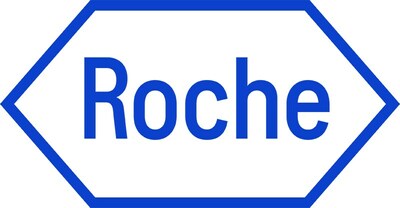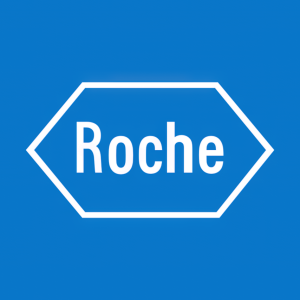Roche obtains CE Mark for first companion diagnostic to identify patients with HER2-low metastatic breast cancer eligible for ENHERTU
- None.
- None.
- Approximately half of all patients with metastatic breast cancer (mBC) express low levels of HER2.1
- Patients with HER2-low status may now be eligible for HER2-targeted treatment, which could significantly improve their outcome.2
- The VENTANA HER2 (4B5) test is the only approved companion diagnostic indicated as an aid in the assessment of HER2-low status in metastatic breast cancer patients.
HER2 is a receptor protein that helps cancer cells grow quickly. To determine a patient's HER2 status, pathologists evaluate, or score, the level of HER2 protein expressed in breast cancer tissue samples. If a patient's tumour expresses high levels of HER2, the patient is identified as HER2-positive and may be considered for HER2-targeted treatment. However, half of all patients with metastatic breast cancer express low levels of HER2 which historically classified them as HER2-negative.
"We are proud to continue our innovation in breast cancer diagnostics through critical tests like this one, which helps identify patients with HER2-low status," said Jill German, Head of Pathology Lab at Roche Diagnostics. "With this expanded approval of our test, we're pleased that more metastatic breast cancer patients across the world may be correctly identified and potentially eligible for this targeted therapy."
The VENTANA HER2 (4B5) test now includes a scoring algorithm that helps pathologists to identify "low expressors" of HER2, assigning a HER2 low status to this group of patients. With this lower cutoff, the test is able to identify patients who may benefit from ENHERTU as a treatment option.
Breast cancer has surpassed lung cancer as the most commonly diagnosed cancer, with an estimated 2.3 million new cases diagnosed worldwide each year. More than 685,000 people die from breast cancer every year.4,5
The CE Mark of the new HER2-low indication expands on the intended use for Roche's proven, on-market VENTANA HER2 (4B5) test, delivering timely, clear and confident results. The launch exemplifies Roche's commitment to continuing to innovate integrated, high medical value solutions that help to advance personalised healthcare.
About VENTANA HER2 (4B5) Rabbit Monoclonal Primary Antibody RxDx
Roche's pre-diluted VENTANA HER2 (4B5) Rabbit Monoclonal Primary Antibody RxDx, used in combination with the fully automated BenchMark IHC/ISH slide staining instrument, standardises all immunohistochemistry (IHC) processes from baking through staining, and reduces the possibility of human error.5 It also minimises inherent variability resulting from individual reagent dilution and other processes found in manual and semi-automated IHC methods. The Roche HER2 (4B5) clone achieves consistently high proficiency assessment scores compared to other clones6 and demonstrates high concordance with HER2 FISH7,8, empowering laboratories to employ the most widely adopted and reliable HER2-IHC primary antibody.
The VENTANA HER2 (4B5) test was used as part of the DESTINY-Breast04 trial to identify patients whose tumours expressed low levels of HER2 protein (IHC 1+ or IHC 2+/ISH-). The trial reported a
About Roche
Founded in 1896 in
In recognizing our endeavour to pursue a long-term perspective in all we do, Roche has been named one of the most sustainable companies in the pharmaceuticals industry by the Dow Jones Sustainability Indices for the thirteenth consecutive year. This distinction also reflects our efforts to improve access to healthcare together with local partners in every country we work.
Genentech, in
For more information, please visit www.roche.com.
* Hereafter referred to as VENTANA HER2 (4B5) test
All trademarks used or mentioned in this release are protected by law.
References
[1] AstraZeneca news release
[2] Daiichi Sankyo news release
[3] ASCO publication
[4] Sung, Hyuna, et al. Global Cancer Statistics 2020
[5] VENTANA HER2 (4B5) Rabbit Monoclonal Primary Antibody RxDx Package Insert, 2024.
[6] NordiQC Assessments
[7] Mayr D, et al. Comprehensive immunohistochemical analysis of Her-2/neu oncoprotein overexpression in breast cancer: HercepTest™ (Dako) for manual testing and Her-2/neuTest 4B5 (VENTANA) for VENTANA BenchMark automatic staining system with correlation to results of BenchMark automatic staining system with correlation to results of fluorescence in situ hybridization (FISH). Virchows Archiv. 2009; 454(3):241–248.
[8] Brügmann A, Lelkaitis G, Nielsen S, et al. Testing HER2 in breast cancer: a comparative study on BRISH, FISH, and IHC. Appl Immunohistochem Mol Morphol. 2011;19(3):203-211.
Roche Media Relations
Jo Lynn Garing
Phone: +1 317-363-7286
E-mail: jo_lynn.garing@roche.com
![]() View original content to download multimedia:https://www.prnewswire.com/news-releases/roche-obtains-ce-mark-for-first-companion-diagnostic-to-identify-patients-with-her2-low-metastatic-breast-cancer-eligible-for-enhertu-302112397.html
View original content to download multimedia:https://www.prnewswire.com/news-releases/roche-obtains-ce-mark-for-first-companion-diagnostic-to-identify-patients-with-her2-low-metastatic-breast-cancer-eligible-for-enhertu-302112397.html
SOURCE Roche
FAQ
What is the significance of the CE Mark approval for Roche regarding the VENTANA HER2 (4B5) test?
What is the role of the VENTANA HER2 (4B5) Rabbit Monoclonal Primary Antibody RxDx in assessing HER2 status?
What is the significance of the approval for ENHERTU in relation to HER2-low status?
How does the VENTANA HER2 (4B5) test benefit metastatic breast cancer patients?








